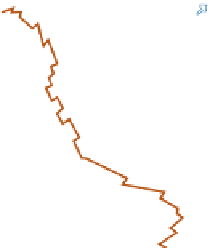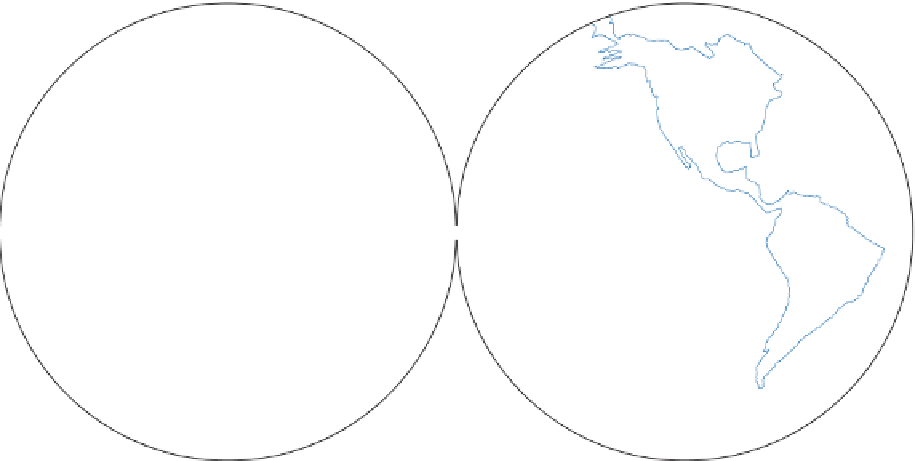Geoscience Reference
In-Depth Information
Processes
Time scale
(years)
Macro-scale geological processes drive the ever-changing global configuration of ocean basins, continents and
mountain ranges, and in turn:
10
6-
10
8
•
Created, and continue to modify, the composition of atmosphere and oceans through volcanic outgassing
and rock weathering
10
1 -
10
9
·• Cycle rock material from its formation, through degradation to reformation
10
1 -
10
8
•
Create global seismic belts which locate most earthquake and volcanic activity
10
6 -
10
7
•
Create random variations in the pattern of surface materials and relief, influencing solar radiation exchange
and, hence, global climate
10
5 -
10
7
•
Channel global ocean currents and disturb meridional and zonal atmospheric circulation, with major impacts
on climate systems and weather events
10
1 -
10
7
•
Drive geomorphological processes through vertical displacement of continental crust and sea levels
10
1 -
10
7
Meso-scale geomorphological processes etch and shape the continental crust into distinct landforms and
landform assemblages or landsystems
10
1 -
10
7
Micro-scale pedological processes drive the formation of soils and, through them:
10
1 -
10
4
• Physical support and attachment sites for flora and fauna
• Principal inorganic source and cycling components of the biosphere nutrient cycle
Geological, geomorphological and pedological processes collectively also create:
•
All our nuclear and fossil fuels, metal and non-metalliferous ores, building stones and aggregates
•
The variety of surface materials and landsystems which provide the foundation of cultural landscapes
•
The substrate on which we construct our buildings, urban and industrial regions, farmland and other economic,
cultural and recreation systems
N
60°
30°
0°
30°
60°
S
Stable
cratons
Major
sedimentary
basins
Later
Phanerozoic
orogens
Principal granite
and terrestrial
basalt terranes
Modern
ice sheets
Subduction
zones
Mid-ocean
ridges
Figure 10.1
Earth's principal surface structures and terranes, showing stable cratons, major sedimentary basins, later
Phanerozoic orogens, principal granitic and terrestrial basalt terranes, mid-ocean ridges and subduction zones.
Source: After Wylie (1971)





























































































































































































































































